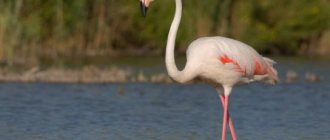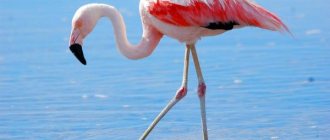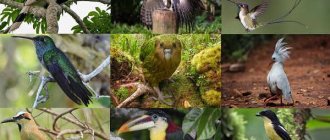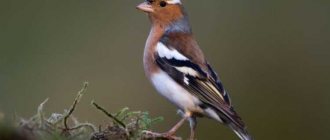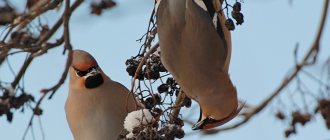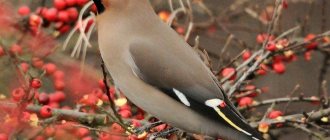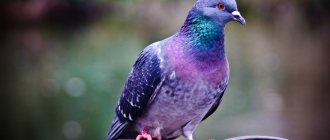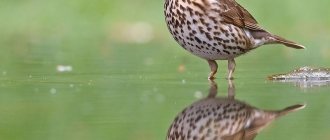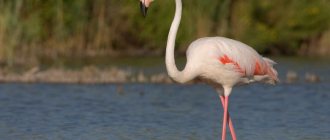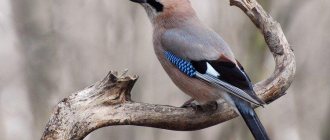27 December71510flamingo bird class
The common flamingo, or as it is also called, the pink flamingo, is a bird from the order Flamingidae. This type of flamingo is the largest and most common. The pink flamingo is truly a bird of paradise, which is naturally unique, graceful and very beautiful. In this article you will find a detailed description and photo of the pink flamingo, and also learn a lot about the common flamingo.
Description of the bird
Flamingo in the water
Flamingo is a large waterfowl of the flamingidae family, the average body length is 140 centimeters, the wingspan is 120-160 centimeters, the weight is 2000-4500 grams.
Appearance
— Advertising —
Flamingo walks on water
Flamingo birds have a unique body structure and plumage color. Flamingos are sociable wading birds, usually 90 to 150 centimeters in height with a barrel-shaped belly and a long, strongly curved neck. The flamingo's head is small with a large massive beak, strongly curved downwards in the middle part. Birds move on long stilted legs. The female flamingo is smaller than the male. The feather color of birds of different sexes is the same. The color range includes shades of pink - from white to burgundy. The legs of most bird species are yellow. The flight feathers and the tip of the beak are black.
What affects the color of a bird
Flamingos looking for fish in the lake
The name Flamingo (from the Portuguese and Spanish word "flamengo"), which means "fiery". The genus name Phoenicopterus (from the Greek word "phoinikopteros") means "red-feathered blood." The color of the bird's feathers and legs is obvious - pink. But not everyone knows why this happened. Newborn flamingo chicks are gray, with black legs and straight black beaks. The flamingo's color changes to pink during the first two years of life. The birds acquired this color of feathers and limbs thanks to beta-carotene.
— Advertising —
Flamingos are omnivores that eat blue-green algae, insects, sea shrimp, crustaceans, and mollusks. Their food contains the natural pigment beta-carotene, which turns the birds' legs and feathers pink. The bright color is achieved due to the fat-like coloring substances lipochromes, which enter the bird’s body along with crustaceans and algae. In lakes where such “food” lives, the water turns pale pink. If the bird does not feed on crayfish, then the pigment will not be released - the color will turn white. In zoos, flamingos are fed carrots, which contain the yellow-orange plant pigment beta-carotene, which adds yellow-orange tones to their color.
Beak
Flamingo beak
The flamingo's beak is long, massive and strongly curved down in the central part. The mandible contains a large tongue, and the mandible covers it. In the upper part of the beak there are horny plates and denticles through which food and water are filtered. Flamingo searches for food in water at shallow depths. The bird grabs food by turning its head so that the beak is at the bottom. The beak works like a ladle, scooping up crustaceans along with mud. The flamingo then presses its tongue against the “palate”, filtering water, dirt and silt through the holes in the beak, and swallows the food. Flamingo eats upside down.
The upper part of the beak is smaller than the lower and is mobile, which is unusual for most birds. In the early 1800s, naturalists argued that the upper part of the beak was movable, but the lower part was not. In 1957, Penelope M. Jenkin published a study, Philosophical Transactions of the Royal Society B, which contained the following information: both parts of the beak are movable independently of each other through hinged joints. When cleaning feathers, flamingos move the upper or lower part of their beak. When eating, the lower part of the beak is motionless, only the upper part moves. Watch the video for more details.
The color of the flamingo's beak depends on the type of bird: the Andean flamingo is white and black, the Red flamingo is coral and black, the Lesser flamingo is black, the Pink flamingo is pink and black, the Jace's flamingo is yellow and black and the Chilean flamingo is pink and black.
How many years do they live
According to the Basel Zoo, the average lifespan of flamingos in the wild is 40 years. The typical lifespan in captivity is more than 60 years.
general characteristics
The history of the origin of flamingos is estimated at tens of millions of years. The homeland of the ancestors of these birds is considered to be an area in which a hot climate prevails, i.e. territories of Asia and Africa. At the same time, the study of the remains of flamingos also demonstrated the presence of these birds in Europe and South America.
Due to their unusual color and natural beauty, birds have been considered unusual birds since ancient times. Some peoples even attributed supernatural properties to them, endowing the image of flamingos with a special magical component. For example, in ancient Egypt, birds were considered a sacred object of worship, to which offerings were made in the hope of fulfilling one’s cherished desire.
In the modern world, the role of flamingos is viewed more prosaically, nevertheless paying tribute to their beauty and grace. Outwardly, the birds resemble representatives of long-legged animals like a heron or a crane, but officially there is no relationship between them.
The closest relative of the flamingo is the goose.
These birds have everything that can ensure their survival in the wild:
- Long and strong legs that help move in shallow water.
- Long neck, providing convenient search for food.
- Paws are webbed, allowing flamingos not to get stuck in the silt of water bodies.
- The beak is strong and curved, with teeth on the sides that help with straining out food.
Flamingos are inhabitants of swamps and ponds. Their average body weight is about 4 kg, while in nature you can find both larger and smaller individuals. The length is about 90-120 cm. The body is round in shape and ends with a small tail.
Regarding the size of the body, flamingos are considered the longest-legged birds, which also have the longest neck. In its normal position, the bird's neck is curved, but if it is stretched straight, its length will be equal to the length of the legs.
Flamingos have small wings that allow them to rise into the air with a long takeoff run. Due to the fact that the size of the wings is relatively small, birds have to constantly flap them to stay in the air. In flight conditions, the bird’s neck and legs do not bend and are stretched in one line. The flamingo's flight itself is quite smooth and swift.
The plumage of birds can be pink, scarlet or white. In this case, all newborn chicks are born completely white.
The color of the feathers develops as they grow older. Its color depends primarily on the nutritional characteristics and products included in the diet. The color is primarily due to carotene, which is found in plants. The more carotene, the more actively the pigments responsible for the brightness of the color are produced.
Flamingos do not have pronounced sexual dimorphism, since females and males have the same color. The largest representative of this species is the common flamingo, whose weight is about 4 kg with a height of 140 cm, and the smallest is the small flamingo, which weighs half as much and does not grow more than 90 cm.
Why does a flamingo stand on one leg?
Photo of a flamingo standing on one leg
Flamingos stand on one or both legs to eat, but sleep on one leg. Sleep appears to require both feet on the ground for balance - since the animal is unconscious. Why flamingos tuck their legs has been of interest to people for a long time. Some recent discoveries have helped shed light on this age-old question. So let's take a closer look at this.
Theory one
A flamingo stands on one leg
. What happens to the skin when you keep your leg in water for an hour, two, three is known. The skin of the leg becomes like a prune. Wading birds have the same problem. This led to the assumption that flamingos stand on one leg because they need to dry the other leg. Since flamingos alternate which foot they have in the water, this theory seems possible, but the assumption is not popular.
Theory two
Flamingos on the lake stand on one leg.
Some experts believe that the act of flamingos balancing on one leg is related to the brain. Animals such as dolphins and ducks turn off only one side of their brain during sleep. The leg controlled by the waking brain side remains on the ground to maintain balance. At this time, the other leg is resting. Other, common theories consider the reason flamingos stand on one leg to be related to the need for hunting or the birds' energy conservation.
Theory three
A Flock of Flamingos Sleep on One Leg
Since a flamingo's legs are long and make up most of the bird's height, it takes a lot of energy to pump blood through both legs. This is a big burden on the heart. Extending one leg and pulling the other closer to the body allows the heart to pump blood more easily. At the same time, it retains body heat. It's like wrapping your arms around your torso to keep warm in cold weather. However, this is an imperfect theory because flamingos stand on one leg even in hot weather.
Theory four
Flamingo landed on a lake
Another theory applies equally to both warm and cool climates. There are many scientists who believe that flamingos only keep one leg in the water to better camouflage themselves. Ponds contain many long, thin objects, including reeds and small trees. A flamingo standing on one leg resembles a tree with a thin trunk when viewed from the water where the bird's prey lives.
Latest Scientific Research
Photo of flamingos standing on one leg on the shore.
Testing of bird corpses showed that flamingos support their body weight on one leg without using muscles. Essentially, supporting one leg allows the flamingo to work better under gravity to support its weight. This theory is supported by the fact that birds actually tend to sway much less when they stand on one leg compared to when they stand on both legs. This suggests that standing on one leg helps flamingos support their weight.
Exactly why they developed this ability to rest this way remains unclear. Researchers continue to study the precise physical mechanisms that allow birds to perform this feat.
What does it eat?
Flamingo looking for something to eat
In the wild, flamingos feed on algae, crustaceans, brine shrimp, diatoms and aquatic plants. The zoo serves special "flamingo food". To maintain their pink color at the zoo, flamingos are fed a commercially prepared diet high in carotenoids. It is estimated that a common flamingo eats up to a quarter of its own weight in food per day. A colony of up to half a million pink flamingos in India consumes 145 tons of food per day.
Nutrition
Where the flamingo lives, there is food suitable for it: rich in algae and organic matter, with countless amounts of crustaceans, mollusks and worms.
Some species eat blue-green algae and diatoms. They search for food in shallow water areas. Having lowered their heads shallowly under the water, they dig at the bottom of the reservoir with their beaks. Moreover, the head is positioned in a strange way: the crown almost touches the bottom, the upper jaw is below, and the lower jaw is above.
Parents feed the chicks with “belching”, which, in addition to food, contains semi-digested secretions from the glands of the proventriculus and the lower part of the esophagus. It should be noted that this light pink liquid is similar in nutritional value to mammalian milk. It also contains carotenoids.
Birds use brackish and fresh water from rain for drinking. To do this, they lick drops of water on the plumage.
Under natural conditions, there have been cases where flamingos lived for 34 years.
Why was it called that?
Flamingo bends its neck
Flamingos are the oldest representatives of birds on earth. According to scientists, these birds originated in places with a hot, humid climate - Asia, Africa and Latin America. The birds were named by Latin Americans. In their dictionary there is a word "flamma" meaning "fire". The plumage of these birds really looks like fire - just as bright.
There is a legend according to which the mythical phoenix bird was reborn into a fiery flamingo.
Taxonomy
Russian name
- Pink (common) flamingo
Latin name
- Phoenicopterus roseus
English name
- Greater flamingo
Class
- Birds (Aves)
Order
- Flamingoformes (Phoenicopteriformes)
Family
- Flamingos (Phoenicopteridae)
Genus
- Flamingo (Phoenicopterus)
Until recently, pink and red flamingos were considered subspecies of the same species, but are now distinguished as independent species.
Where do flamingos live
Chile, Andean and James flamingos live in South America, while greater and lesser flamingos live in Africa. Greater flamingos can also be found in the Middle East and India. Flamingos are waterfowl, so they live in and around lagoons and lakes. These bodies of water are usually salty or alkaline.
Area
Flamingo habitat
Warm-loving birds are common in regions with tropical and subtropical climates. Numerous flamingo populations are concentrated in Central Asia and Africa. Birds also live in South America, the Caribbean, southern Europe, India and Kazakhstan.
Habitats
A flock of flamingos
For nesting, flamingos choose desert areas near the shores of salt lakes and lagoons. They choose places with enough food to avoid making long flights in search of food for as long as possible. The Andean flamingo prefers to settle high in the mountains, in areas with alkaline lakes.
Security
In the 1950s, the James flamingo was thought to be extinct, but in 1957 a colony of these birds was discovered in Bolivia. Today the number of this species is already 50,000, the same number of individuals of the Andean subspecies. To preserve the species, zoos were created in Switzerland and the USA. However, if you try to move the colony, sooner or later the individuals will return to where they were born.
Lifestyle
Flock of flamingos
Flamingos lead a sedentary lifestyle. Only the Pink Flamingo, living in a temperate climate zone, makes seasonal migrations. Some colonies have to move due to climate change, drying up water bodies and a sharp reduction in food. During the migration period, the flock flies up to 1.5 thousand kilometers. In flight, birds reach speeds of up to 60 kilometers per hour.
A flock of flamingo birds look at the sky
Flamingos are socially developed birds. They live in large families, accumulating in flocks of thousands (the number reaches tens of thousands of birds). The family is divided into clans, which differ in the timing of egg laying. Ornithologists have noted that the desire to reproduce in birds appears only in conditions of mass population. Flamingos that live alone rarely breed offspring.
Flock of flamingos in the swamp
Flamingo is a wetland dweller. Birds lazily wander through the water during the daytime and look for food. Flamingos rarely and reluctantly fly. The bird has short wings and has to run to fly. In flight, flamingos often flap their wings. The streamlined shape of the body, which is achieved by straightening the legs and neck, allows one to stay in the air for a long time and make long flights.
The story of life at the zoo
In the collections of zoos around the world, flamingos are represented very widely - the bird is cute, displayable, and easy to keep. In the history of the Moscow Zoo they have always been there. Most of the flamingos on display are red. There are a few pink ones - these are older birds that arrived at the zoo before the reconstruction of the 90s. In our zoo, pink flamingos are kept together with red ones. Birds of different species do not conflict, but do not form mixed pairs. The flamingo's diet includes the maximum of what we can offer them. These are grated carrots, minced fish, dry gammarus, special high-protein feed with the necessary vitamins and microelements. All this food is filled with water, and the birds strain out what they need from this liquid mixture. We give liquid food once a day, and dry feed constantly. In a zoo it is impossible to provide the same level of carotenoids in their food as they consume in the wild, so we add dietary carotene to their food. The difficulty in keeping flamingos is the selection of food so that both vitamins and protein content are balanced. In summer, flamingos are kept in an open enclosure on the Big Pond, in winter - in a warm room adjacent to this enclosure, where they are perfectly visible behind glass. We move the birds to a warm room at temperatures close to zero - when night frosts begin.
Reproduction
Photo of a female and male flamingo
The nesting period falls from May to August. In March, the birds' behavior changes. Males become aggressive and impulsive. They start fights for the female they like or for a place to build a nest. During mating games, birds stage exhibition fights and “runs” in front of the public. Flamingos are monogamous birds. Young birds choose their partner once and for all. An educated couple does everything together: the birds protect each other, sing “songs” in duet, select a nesting site, build a home, and breed offspring.
Photo of flamingo eggs
Birds build nests from mud and silt. The dwelling is a cone-shaped structure 40 centimeters deep, more like a pit than a traditional bird's nest. Some flamingos prefer to lay eggs in rocks or simply on sand. The treasure contains one, rarely two, white eggs. Both parents do the incubation and change once a day. A month later, a chick is born.
Flamingo chick
Photo of a flamingo chick
At a newborn age, a flamingo chick is physically developed: it actively eats food, tries to fly, and controls its legs well. The chick is born with abundant gray fluff and short, thick gray limbs. The beak is straight, it will become curved by the end of the second month of life. A week after birth, the chicks climb out of the nest for the first time and communicate with other birds.
In the photo a flamingo chick is running
What do flamingo chicks eat?
For the first two months, flamingo chicks do not eat meat, fish or insects. Adult flamingos feed their chicks with bird milk (milk is produced not only by the female, but also by the male). Flamingos feed their chicks with blood and milk; the ratio of blood to milk is 23% to 77%. This secretion is called “red milk” and comes from the bird’s crop. In this regard, many are interested in the question of how exactly flamingos feed their chicks?
The process of creating future food for the chick begins with the rupture of blood vessels in the esophagus of an adult flamingo. The blood is mixed with the secretion formed in the crop and then poured directly into the baby from beak to beak. Crop milk is typical not only for flamingos, but also for pigeons, some penguins and parrots.
Why do flamingos feed their chicks blood? Ornithologists have not yet come to a common conclusion, but it is believed that the blood is rich in minerals necessary for the growth of the chick. Bird's milk itself consists of milk fat, proteins, vitamins and contains up to approximately 23-25% of the blood of an adult bird.
The flamingo chick feeds on milk for 50-60 days, until the beak grows enough to be able to get food from the water.
Flamingo chick sitting in a nest
Adult flamingos not only look after their own young, but also take care of other chicks that appear in the large family. Orphaned chicks are taken into care by other parents. In this regard, flamingos are similar to penguins: while some adult birds get food, others watch their offspring at this time. Then the birds change roles. There are 150-200 cubs in one children's group. Parents find their child by voice.
At 2.5 months, the young flamingo becomes an adult and leaves the parental nest.
Nesting
Where the flamingo lives, where the bird settles, nests appear at some distance from each other. They take the form of small towers built from shells and silt. The height of the nests is 50-70 centimeters.
There are usually 1-3 white eggs in a clutch. The chicks hatch, already covered with down, sighted and very active. They leave the nest after a few days and, at about the age of one month, change their downy outfit to another. On the 65-80th day of life, flamingo chicks acquire the skills of independent flight, and their filtering apparatus is finally formed.
Sexual maturity occurs at the age of 4 to 5 years. These birds are monogamous and usually nest in colonies, very closely adjacent to each other.
Within the entire current range, there are only no more than 22.5 thousand flamingos left. The reduction in areas suitable for nesting has played a huge role in the decline in bird numbers.
Interesting Facts
1 of 4
Flamingo landed on the lake
Photo of flamingos standing on one leg on the shore
Flamingos on the lake stand on one leg
A flock of flamingos sleep on one leg
- The coat of arms of the Bahamas features a Flamingo.
- The ancient Egyptians believed that flamingos granted wishes.
- Flamingos are one of the oldest birds living on earth. The discovered remains of flamingo fossils date back 30 million years.
- Flamingos do not breathe while eating.
- In flight, the flock reaches speeds of up to 65 kilometers per hour.
- The flamingo's closest relative is the goose.
- In totemism, the flamingo bird is a symbol of free expression of emotions . Flamingos also symbolize balance, openness to others, an open heart, family, caring for family and relationships. Flamingos also symbolize new experiences and the importance of belonging to a community.
general information
There are only five species in the flamingidae family. The most common is ordinary. This is a fairly large bird, weighing up to 4 kilograms. The smallest of this family is the lesser flamingo.
The red flamingo's favorite nesting places are islands, lagoons of the sea coast and salt marshes on the shores of lakes. Before we learn in more detail where the flamingo lives, we will present a brief general description of the bird.
Natural enemies of flamingos
A flamingo is attacked by another bird.
Flamingos are hunted by large birds of prey - eagles, falcons. They destroy nests and eat eggs. A flock of kites often attacks busy hatching adult flamingos. It is true that mutual assistance is strong in the flamingo bird family. Birds bravely rush to protect the eggs, fighting bloodthirsty predators.
A predator hunts a flamingo
Flamingos feed not only on birds, but also on animals. It is not difficult for wolves, foxes, and jackals to catch prey, since flamingos cannot run fast. In addition, outside the nesting period, flamingos are slow and phlegmatic. Predatory animals settle next to the flamingo colony to regularly taste their juicy meat.
Poachers sell flamingos
In addition to birds of prey and mammals, humans also hunt flamingos. Poachers exterminate these birds en masse because of their unique plumage. Feathers used for decorations and souvenirs are sold by hunters for huge sums of money. Flamingo meat is not to people's taste, but eggs are considered a delicacy. Exotic lovers destroy nests, steal eggs and take them to other countries.
A flock of flamingos near the shore of a pond
The number of flamingo birds is rapidly declining. This is due to climate change and human economic activity. There are fewer and fewer places suitable for the habitat of this peace-loving, calm bird. Reservoirs are drying up, water is becoming polluted, and there is less and less food. Birds are dying out because they have nowhere to live. In countries where flamingos nest, protective measures are taken to preserve species diversity. Bird hunting is prohibited by law, and flamingo habitats are becoming protected areas.
Population and species status
Flamingos, like many other species of birds, suffer from human activities, and to a greater extent than from natural enemies.
These birds are hunted for their unique colors, and their nests are also destroyed, removing delicious eggs from the nests. In addition, birds are being deprived of their usual habitats due to the construction of new mines, enterprises, and highways.
Negative anthropogenic factors associated with environmental pollution lead to a general decrease in the number of these birds.
It is important to know! At one time, scientists came to the conclusion that James's flamingos had disappeared forever, but in 1957 these birds were discovered. Now the population of these birds is within 50 thousand individuals.
And yet, such a number of flamingos is considered insufficient, so the birds are under threat of complete extinction. As for the Chilean flamingo, its population reaches 200 thousand individuals, so this species has positive reproduction dynamics. The small flamingo, whose population numbers several million individuals, feels great.
The common flamingo is of greatest concern to conservation authorities because it numbers no more than 35 pairs.
